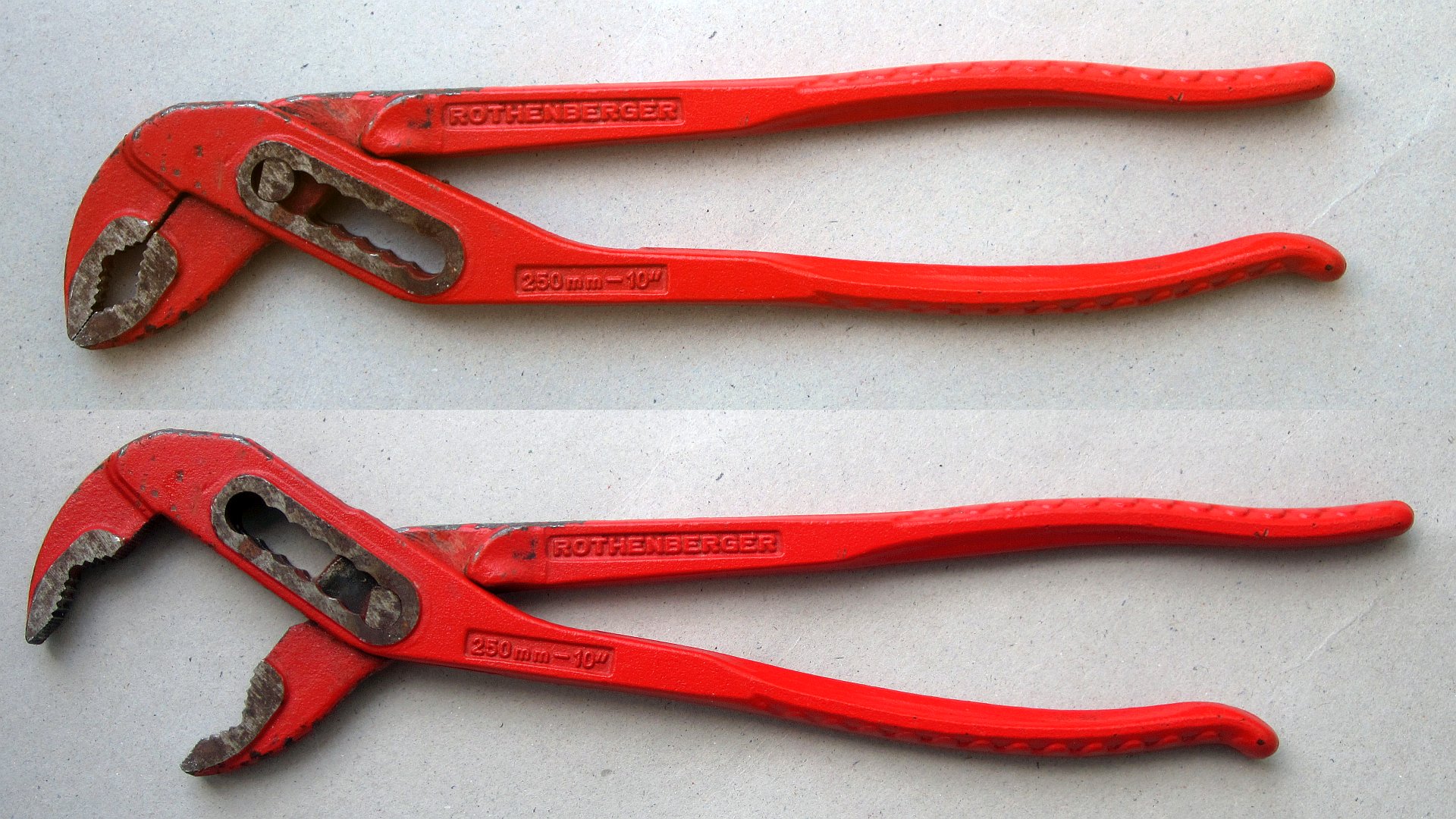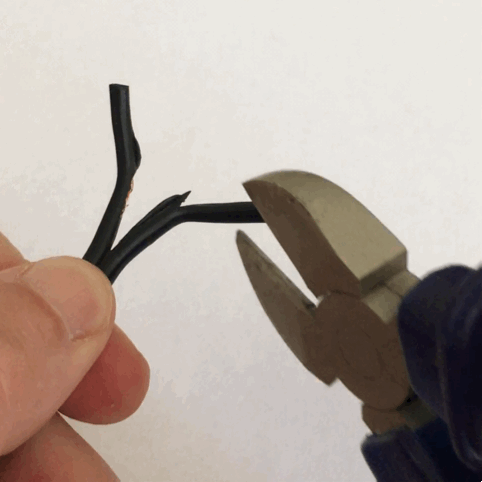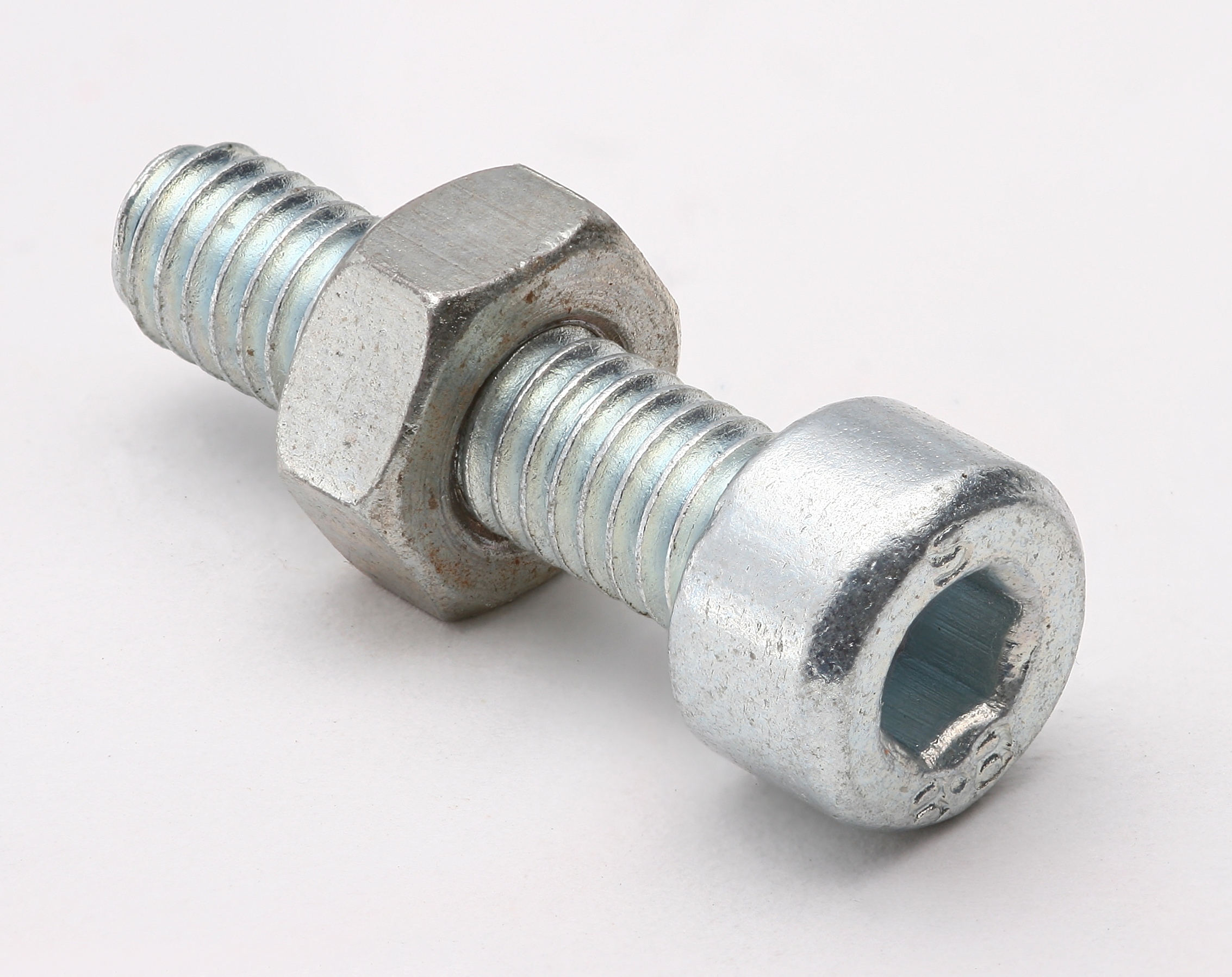|
Tongue-and-groove Pliers
Tongue-and-groove pliers are a type of slip-joint pliers. They are also known as: * adjustable pliers, * Channellocks ( i.e., Channellock brand pliers), * water pump pliers, * groove-joint pliers, * arc-joint pliers, * Multi-Grips, * tap or pipe spanners, * swan neck pliers. * Monkey pliers. Design They have serrated jaws generally set 45 to 60 degrees from the handles. The lower jaw can be moved to a number of positions by sliding along a tracking section under the upper jaw. An advantage of this design is that the pliers can adjust to a number of sizes without the distance in the handle growing wider. These pliers often have long handles—commonly 9.5 to 12 inches long—for increased leverage. The weight of the tool can also vary, depending on the material used. Uses Tongue-and-groove pliers are commonly used for turning and holding nuts Nut often refers to: * Nut (fruit), fruit composed of a hard shell and a seed, or a collective noun for dry and edible fruits or ... [...More Info...] [...Related Items...] OR: [Wikipedia] [Google] [Baidu] |
Slip-joint Pliers
Slip joint pliers are pliers whose pivot point or fulcrum can be moved to increase the size range of their jaws. Most slip joint pliers use a mechanism that allows sliding the pivot point into one of several positions when the pliers are fully opened. Jaws can be thick, thin, regular and multiple. Multiple ones are those slip joint pliers that provide 2 or more pivoting positions. Varieties There are many different varieties of slip joint pliers, including straight slip joint pliers, tongue-and-groove pliers and lineman's pliers. Straight slip joint pliers Straight slip joint pliers are configured similarly to common or lineman's pliers Lineman's pliers (US English), Kleins (genericized trademark, US usage), linesman pliers (Canadian English), side cutting linesman pliers and combination pliers (UK / US English) are a type of pliers used by linemen, electricians, and other tra ... in that their jaws are in line with their handles. One side of the pliers usually has two ... [...More Info...] [...Related Items...] OR: [Wikipedia] [Google] [Baidu] |
Channellock
Channellock is an American company that produces hand tools. It is best known for its pliers—the company manufactures more than 140 types of pliers—particularly its eponymous style of tongue-and-groove, slip-joint pliers. Its pliers have distinctive sky-blue handle grips; the company has been using the same trademarked shade of blue since 1956. It also produces cutting pliers, linemen's pliers, long nose pliers, adjustable wrenches, screwdrivers, nutdrivers and special-purpose pliers, as well as multi-function tools for the fire service and other first responders. According to the company, , all of its pliers were manufactured at one of its two facilities in Meadville, Pennsylvania. However, not all products sold by the company are produced in the United States; products such as screwdrivers and ratchet wrenches are produced in Canada, Taiwan, or China. History The company was founded in 1886 when George B. DeArment, a blacksmith from Evansburg, Pennsylvania (present da ... [...More Info...] [...Related Items...] OR: [Wikipedia] [Google] [Baidu] |
Pliers
Pliers are a hand tool used to hold objects firmly, possibly developed from tongs used to handle hot metal in Bronze Age Europe. They are also useful for bending and physically compressing a wide range of materials. Generally, pliers consist of a pair of metal first-class levers joined at a fulcrum positioned closer to one end of the levers, creating short ''jaws'' on one side of the fulcrum, and longer handles on the other side. This arrangement creates a mechanical advantage, allowing the force of the grip strength to be amplified and focused on an object with precision. The jaws can also be used to manipulate objects too small or unwieldy to be manipulated with the fingers. Diagonal pliers, also called side cutters, are a similarly-shaped tool used for cutting rather than holding, having a pair of stout blades, similar to scissors except that the cutting surfaces meet parallel to each other rather than overlapping. Ordinary (holding/squeezing) pliers may incorpora ... [...More Info...] [...Related Items...] OR: [Wikipedia] [Google] [Baidu] |
Nut (hardware)
A nut is a type of fastener with a threaded hole. Nuts are almost always used in conjunction with a mating bolt to fasten multiple parts together. The two partners are kept together by a combination of their threads' friction (with slight elastic deformation), a slight stretching of the bolt, and compression of the parts to be held together. In applications where vibration or rotation may work a nut loose, various locking mechanisms may be employed: lock washers, jam nuts, eccentric double nuts, specialist adhesive thread-locking fluid such as Loctite, safety pins ( split pins) or lockwire in conjunction with castellated nuts, nylon inserts (nyloc nut), or slightly oval-shaped threads. Square nuts, as well as bolt heads, were the first shape made and used to be the most common largely because they were much easier to manufacture, especially by hand. While rare today due to the reasons stated below for the preference of hexagonal nuts, they are occasionally used in some situatio ... [...More Info...] [...Related Items...] OR: [Wikipedia] [Google] [Baidu] |
Screw
A screw and a bolt (see '' Differentiation between bolt and screw'' below) are similar types of fastener typically made of metal and characterized by a helical ridge, called a ''male thread'' (external thread). Screws and bolts are used to fasten materials by the engagement of the screw thread with a similar ''female thread'' (internal thread) in a matching part. Screws are often self-threading (also known as self-tapping) where the thread cuts into the material when the screw is turned, creating an internal thread that helps pull fastened materials together and prevents pull-out. There are many screws for a variety of materials; materials commonly fastened by screws include wood, sheet metal, and plastic. Explanation A screw is a combination of simple machines: it is, in essence, an inclined plane wrapped around a central shaft, but the inclined plane (thread) also comes to a sharp edge around the outside, which acts as a wedge as it pushes into the fastened material, and th ... [...More Info...] [...Related Items...] OR: [Wikipedia] [Google] [Baidu] |
Champion–DeArment Tool Company
Channellock is an American company that produces hand tools. It is best known for its pliers—the company manufactures more than 140 types of pliers—particularly its eponymous style of tongue-and-groove, slip-joint pliers. Its pliers have distinctive sky-blue handle grips; the company has been using the same trademarked shade of blue since 1956. It also produces cutting pliers, linemen's pliers, long nose pliers, adjustable wrenches, screwdrivers, nutdrivers and special-purpose pliers, as well as multi-function tools for the fire service and other first responders. According to the company, , all of its pliers were manufactured at one of its two facilities in Meadville, Pennsylvania. However, not all products sold by the company are produced in the United States; products such as screwdrivers and ratchet wrenches are produced in Canada, Taiwan, or China. History The company was founded in 1886 when George B. DeArment, a blacksmith from Evansburg, Pennsylvania (present day ... [...More Info...] [...Related Items...] OR: [Wikipedia] [Google] [Baidu] |



